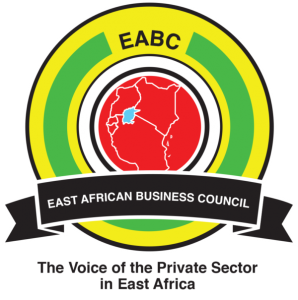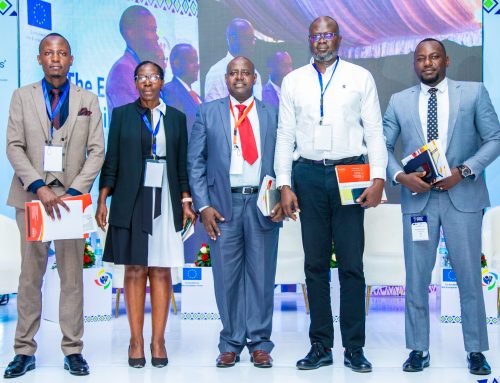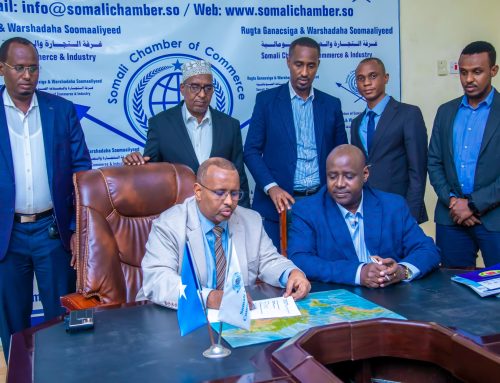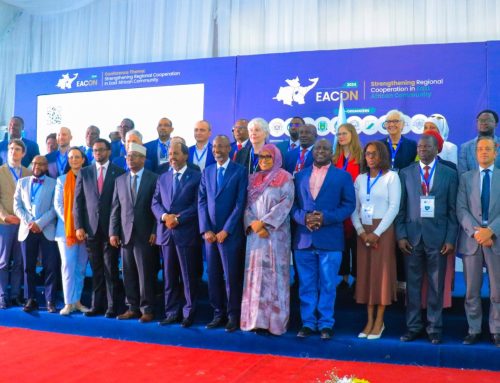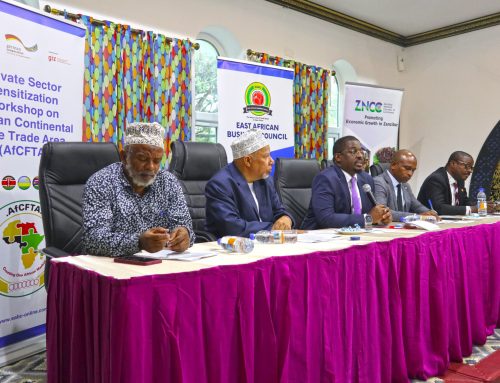Tuesday, 17th August 2021: According to the recent study entitled, “Protecting East Africa’s Natural Capital the Cost of Inaction” by the EAC in partnership with the USAID-funded Economics of Natural Capital in East Africa (NatCap) program, the Great East African Plains, the Northern Savannas, the Albertine Rift Forests, and the Ruweru-Mugesera-Akagera Wetland landscapes contribute USD 10.9 billion annually to EAC economies and $608 billion globally.
The study shows these ecosystems contribute $5.92 billion, $1.1 billion and $2.6 billion to regulating services, carbon storage and harvestable resources in the region, respectively.
Speaking today during the Virtual Private Sector Round Table on the Economics of Natural Capital in East Africa, organized by EABC and EAC in partnership with the USAID, Mr. Simon Kaheru, EABC Vice Chair, said “The landscapes contribute $1.28 billion to cultural services and employ conservation, tourism, and related services to 786,663 people in the region.”
“EABC is committed to identifying and analyzing barriers and enablers to support private sector’s uptake and investments in nature-based solutions, said Mr. Kaheru.
Mr. Kaheru emphasized that natural capital is declining, as a percentage of the regio’s total wealth. “USAID is proud to partner and support the protection of natural capital in East Africa,” said Ms. Aurelia Micko.
On his part, the Chief Guest, Mr. Keneth Bagamuhunda, Director General, Customs and Trade, EAC Secretariat said “In line with the EAC Treaty, Partner States undertake to develop a collective and coordinated policy for conservation and sustainable utilization of wildlife and other tourist sites in the Community”
In terms of regulating services, the study indicates that each year the Great East African plains contribute over USD3.2 billion in the region, in particular, USD. 1 billion on water flow through infiltration & storage of 9 million m3 of rainwater, USD.700,000 in water quality amelioration and USD. 2.2 billion erosion control thereby protecting lakes, reservoirs and coastal environments.
In the region, carbon storage value is estimated at USD.788 million per year based on the social cost of carbon (SCC).
“The global value of carbon storage is USD 400 billion per year – twice the 2018 GDP output of the East African region, this provides a case for policymakers to tap into international conservation donors or carbon markets to generate revenue for conservation,” said Mr. Kaheru.
On his part, Mr. John Bosco Kalisa said, “EAC risks losing up to 19.5% in tourism revenue by 2050 if natural capital is not protected.”
Yearly, the Great East African plains contribute USD.592million in crop pollination, USD.557.4 million in livestock production and USD,195 million in harvested resources – a total of over USD.1.3billion.
“Wetlands are important for providing buffers to flooding, offer food and used for building, these ecosystems contribute USD.50.2 million per year,” said Mr. Kalisa
According to the study, wetlands contribute USD.12.4 million in Burundi; USD.26.1 million in Rwanda; USD.11.7 million in Tanzania respectively while the Northern Savannas yearly contribution is estimated at USD.3.17 billion.
Mr. Patrick Mugenyi, CEO New Forest Company Ltd, Mr. Yves Ngenzi, Regional Coordinator East African Tourism Platform, Ms. Sophie Odupoy, Head of Public Affairs, Koko Networks, Mr. Edouard Ndayisaba, Vice Chairman, Energy Private Developers Association (EPD), Rwanda , Mr. Francis Kisirinya, Executive Director , Private Sector Foundation and Mr. Dalmus Mbai , CEO Safer Power Ltd shared insights on the opportunities for investment in natural environment and sustainability.
The business leaders recommended the need to promote blended finance solutions and more investments in projects favourable to natural capital such as afforestation. Other recommendations include: promotion of Innovations, Agriculture smart technologies, Ease access to viable carbon markets, Revenue sharing mechanism between the communities and the regulators of the tourism sector, Incentives to tourism operators cushion them from the impact of COVID-19, Coordinated planning between the government and the private sector in terms of rolling out renewable energy development, distribution and financial instruments the energy sector.
The business leaders also urged the EAC Partner State to pursue transboundary cooperation and coordination, develop public-private partnerships around insurance schemes for farmers and promote community-based natural resource management in order to safeguard the natural capital.
Issued by:
Mr. John Bosco Kalisa
Executive Director/ CEO
East African Business Council (EABC)
9th Floor Mafao House | Old Moshi Road | Arusha | Tanzania
P. O. Box 2617 | Tel: +255 27 2520162
Email: director@eabc-online.com I Website: eabc.info
EABC – The Voice of the Private Sector in East Africa
Notes to Editors
About East African Business Council: The East African Business Council (EABC) is the regional apex body of private sector associations and Corporates from the 6 East African countries. It was established in 1997 to foster the interests of the private sector in the integration process of the East African Community. EABC vision is a borderless East Africa for business and investment. The primary mission is to promote sustainable private sector driven growth in the EAC.
Definition of Great East African Plans
The Great East African Plains (Kenya and Tanzania) – Includes the Serengeti-Mara, Ngorongoro Conservation Area, Arusha National Park, Amboseli-Kilimanjaro conservation area, and Tsavo-Mkomazi transboundary areas; the Northern Savannahs (Kenya, Uganda, South Sudan) – Includes the Kidepo protected area complex, the Nimule National Park/Otze Forest Reserve, the Karamoja cluster conservation areas between Uganda and Kenya, and Mt. Elgon; the Albertine Rift Forests (Uganda, Rwanda, Burundi) – Comprises much of the Albertine Rift Valley forest conservation areas, including Queen Elizabeth National Park, the Greater Virunga landscape, and the Nyungwe-Kibira area; and the Rweru-Mugesera-Akagera Wetlands Complex (Rwanda, Burundi, Tanzania) – Includes the Akagera catchment emanating from Lake Rweru, from which the Kagera River flows east along the Rwanda-Burundi and Tanzania-Rwanda borders.
